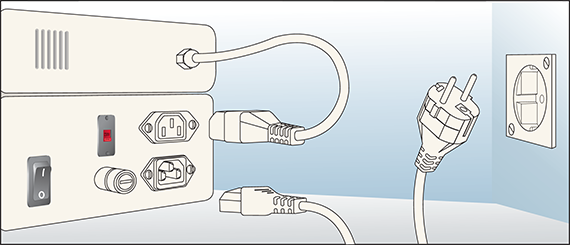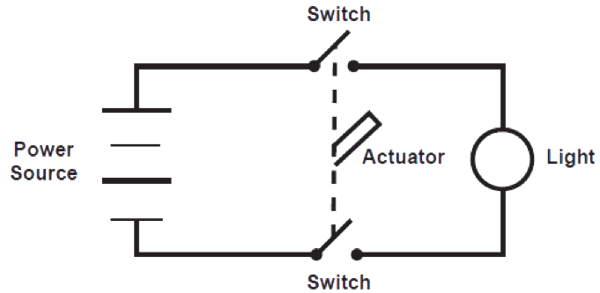“Rock Out” with a Double-pole, Single-throw Rocker SwitchRocker Switch
Posted on 7/30/25 10:16 AM

A switch is an electrical component used in equipment to “switch” power on and off—technically its function is to open and close a circuit. An open circuit (indicated by a “O” on the rocker) turns devices off, and closing them turns the device on (indicated by a “—” on the rocker) which allows the current to flow again. While it sounds somewhat backwards, it’s the nomenclature of electrical circuits.
A switch contains basic parts: the actuator, housing, contacts, and the terminals. The actuator (the moveable part) comes in a variety of styles: rocker, rotary, toggle, and push button. Switch designs also vary on how the circuit opens and closes. The double-pole, single-throw rocker design is used in switches carried by Interpower. Actuating the switch through the various styles above moves a thin metal bar to close the circuit allowing the AC power to flow. Rocking the switch back to its former position moves the arm away from the conductive path and opens the circuit which stops the flow of AC power.
Double-Pole, Single-Throw Design
The main reason for choosing this design is the safety considerations in international markets since international wiring systems are generally non-polarized. By using the double-pole/single-throw switch, the contacts can cut off power to the line and neutral wires when flipped into the “off” position. The simultaneous switching of both conductors is required in most international standards and accepted by North American safety agencies.

Rocker Switch Characteristics
Rocker power switches are usually intended for use in mains power applications on large equipment or smaller devices. They can be sold globally because they fit in industry standard panel cut-outs and carry agency approvals, current ratings, and contact spacings that are appropriate for global applications.
The rocker actuator style switch is one of the most popular switches on the market: it mounts unobtrusively on a panel; the switch itself contains the markings that indicate position, which eliminates the need for separate power status indicators; It’s not as easy to accidentally activate a rocker switch than a push-button switch. And, a rocker switch can typically handle more current than push button or slide switches because a snap-action switch design can be used.
The silver-plated contacts in these switches are specified for many electrical applications, such as medical testing machines, industrial and food service equipment, and multiple devices in office environments. Connections can be made via 6.3mm or 4.8mm quick disconnects. This switch can snap directly into a panel with no additional hardware required.
Additional Resources
For more information on switches offered by Interpower, see Switches and the Featured Product page.
Interpower offers free technical support. For further assistance, please see Interpower’s contact information below.
Note: Originally posted 4/23/2018, updated 7/30/2024
Topics: product design, rocker switch





